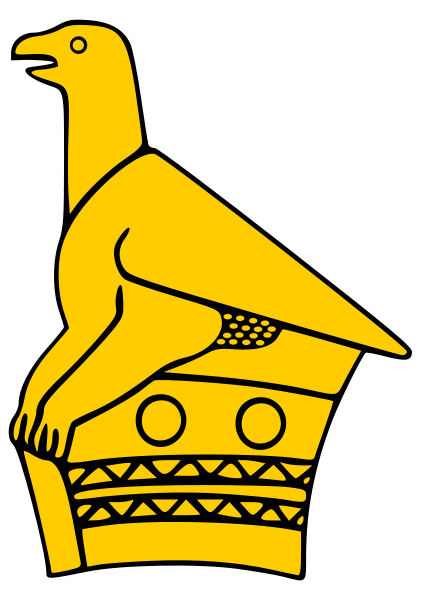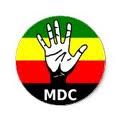Dick King
A Modest Hero
Richard Philip "Dick" King (1813-1871) was an English trader and colonist at Port Natal, a British trading station in the region now known as KwaZulu-Natal. He is best known for a historic horseback ride in 1842, where he completed a journey of 960 km / 600 miles in 10 days, in order to request help for the besieged British garrison at Port Natal (now the Old Fort, Durban).
Early Years
Dick King was born in Chatham, England on 28th November 1813. His family emigrated to the Albany district of the Cape Colony in 1820, as part of the settler program. In 1828 however his family resettled to the then frontier region of Port Natal, when Dick was about 15 years of age. His first employment was as a wagon driver for the pioneer traders. In Reverend Francis Owen's company he met Zulu chief Dingaan, and also got acquainted with captain Allen Gardiner.
The Voortrekkers
Dick King first came to prominence after the 1838 murders of the Voortrekker leader Retief and his delegation at the kraal of the Zulu chief Dingaan. American missionaries who heard of the murders notified Port Natal. There Alexander Biggar sent Dick King to warn his 18 year old son, George, and others who were 120 miles inland at the Voortrekker camps. Dick King departed immediately on foot, accompanied by a number of natives. Despite covering the distance in four days by walking day and night, they arrived just after the Rensburg voortrekker camp was attacked. They reached the vicinity of the next camp, near present day Estcourt, just as the attack on it started on February 17, 1838. Though cut off from the Gerrit Maritz laager, he participated in its defence, but was unable to prevent the death of George, who was further inland at the Blaauwekrans river. 600 Boers, including women and children, died in the surprise attacks though others managed to survive the heavy and sustained Zulu onslaughts.
The fateful Biggar expedition
The English settlers at the bay, hearing of the latest attacks on the Boers, were determined to make a diversion in their favor. Two Englishmen from Port Natal, Thomas Halstead and George Biggar, were among those already killed at Dingaan's kraal and Blaukraans respectively. Some 20 to 30 European men, including Dick King, were placed under the command of Robert Biggar. With a following of 1,500 Zulus who deserted from Dingaan, they crossed the Tugela river near its mouth and proceeded to Ngungunhlovu. After four days they were able to take 7,000 head of cattle from a group of Zulus who fled. The party returned with these cattle to the bay, and discovered that a spy of Dingaan had been killed there in their absence.
Once again they set off to Dingaan's kraal and reached Ndondakusuka village north of the Tugela on April 17, 1838, which belonged to a captain of Dingaan, named Zulu. Here, while questioning a captive, likely a decoy, they were closed in by a strong Zulu force led by Dingaan's brother Mpande. The English soon found that retreat was impossible, and blundered by dividing their force to oppose their encirclement. The Zulus made a successful dash which split the forces in two. In the desperate situation that ensued, the English force was overwhelmed. Only Dick King, Richard (or George) Duffy, Joseph Brown, Robert Joyce and about 500 Zulus escaped to the bay.
Pursued by the Zulu force, all the European inhabitants of Port Natal were compelled to take refuge for nine days on the Comet, a British vessel which happened to lie on anchor in the bay. When the Zulus retired, only Dick King and some seven or eight others returned to live at the port. The missionaries, hunters and other traders returned to the Cape.
Defence of Port Natal
In 1842 however the English annexed Port Natal by sending a garrison under the command of Captain Charlton Smith (who also served at Waterloo). The Voortrekkers had in the meantime consolidated their position inland. They established the Boer republic of Natalia and were intent on expelling the English force from the strategic bay area. This soon led to the Battle of Congella, where the English suffered heavy casualties besides the loss of their artillery. The English garrison had to retreat to their tented camp where their only defence was their trenches and earthworks. The camp was besieged by Andries Pretorius who kept up the small arm and artillery attack continuously, day after day.
Trader Christopher Cato, who was to become Durban's first mayor, informed Dick King of the situation, who was on the Mazeppa vessel on the 25th of May. Before daybreak the next morning, King was met by his 16 year old servant Ndongeni, who brought two horses to the current Salisbury island in the bay. Attached to a boat, the tethered horses swam alongside the boat to the bluff, from where King and Ndongeni escaped.
From Port Natal (now Durban), King and Ndongeni started a heroic horseback ride to convey a request from Captain Smith for immediate reinforcements. The journey involved a ride of 960 km / 600 miles through the wilderness and the fording of 120 rivers to arrive at Grahamstown. Ndongeni was forced to return half way through the journey, as he had no saddle or bridle. Dick King reached Grahamstown 10 days after leaving Port Natal, a distance normally covered in 17 days. King returned a month after his escape on the Conch, one of the British vessels which carried the relief parties. It arrived at the bay on the 24th of June, and the reinforcements were in time to save Smith’s garrison from imminent surrender or starvation.
Recognition
Ndongeni received a farm at the Mzimkulu river and King a farm at Isipingo for their services. At Isipingo King managed a sugar mill until his death in 1871. Ethel Campbell conducted an interview with Ndongeni in 1911 from which she learned the details of the epic journey. A statue commemorating Dick King and his journey was unveiled in Durban on August 14th, 1915.


 South Devon Sound Radio
South Devon Sound Radio Museum of hp Calculators
Museum of hp Calculators Apollo Flight Journal
Apollo Flight Journal Apollo Lunar Surface Journal
Apollo Lunar Surface Journal Cloudy Nights Classic Telescopes
Cloudy Nights Classic Telescopes martini in the morning - The Lounge Sound
martini in the morning - The Lounge Sound The Savanna - Saffer Shops in London
The Savanna - Saffer Shops in London Linux Mint
Linux Mint
 Movement for Democratic Change
Movement for Democratic Change